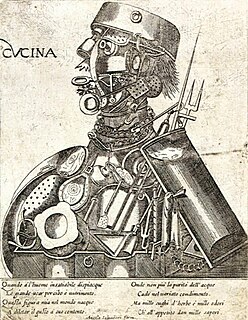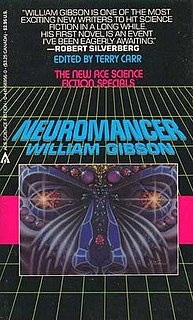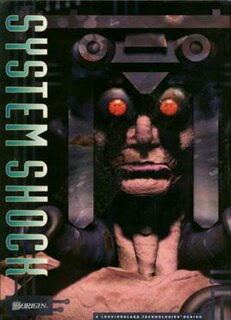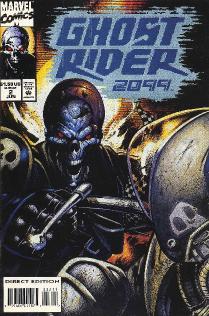
Cyberspace is a concept describing a widespread interconnected digital technology. "The expression dates back from the first decade of the diffusion of the internet. It refers to the online world as a world 'apart', as distinct from everyday reality. In cyberspace people can hide behind fake identities, as in the famous The New Yorker cartoon." The term entered popular culture from science fiction and the arts but is now used by technology strategists, security professionals, government, military and industry leaders and entrepreneurs to describe the domain of the global technology environment, commonly defined as standing for the global network of interdependent information technology infrastructures, telecommunications networks and computer processing systems. Others consider cyberspace to be just a notional environment in which communication over computer networks occurs. The word became popular in the 1990s when the use of the Internet, networking, and digital communication were all growing dramatically; the term cyberspace was able to represent the many new ideas and phenomena that were emerging.

Neuromancer is a 1984 science fiction novel by American-Canadian writer William Gibson. Considered one of the earliest and best-known works in the cyberpunk genre, it is the only novel to win the Nebula Award, the Philip K. Dick Award, and the Hugo Award. It was Gibson's debut novel and the beginning of the Sprawl trilogy. Set in the future, the novel follows Henry Case, a washed-up hacker hired for one last job, which brings him in contact with a powerful artificial intelligence.

Pat Cadigan is a British-American science fiction author, whose work is most often identified with the cyberpunk movement. Her novels and short stories often explore the relationship between the human mind and technology. Her debut novel, Mindplayers, was nominated for the Philip K. Dick Award in 1988.

System Shock is a 1994 first-person action-adventure video game developed by LookingGlass Technologies and published by Origin Systems. It was directed by Doug Church with Warren Spector serving as producer. The game is set aboard a space station in a cyberpunk vision of the year 2072. Assuming the role of a nameless security hacker, the player attempts to hinder the plans of a malevolent artificial intelligence called SHODAN.

Vernor Steffen Vinge is an American science fiction author and retired professor. He taught mathematics and computer science at San Diego State University. He is the first wide-scale popularizer of the technological singularity concept and perhaps the first to present a fictional "cyberspace". He has won the Hugo Award for his novels and novellas A Fire Upon the Deep (1992), A Deepness in the Sky (1999), Rainbows End (2006), Fast Times at Fairmont High (2002), and The Cookie Monster (2004).

The Museum of Pop Culture or MoPOP is a nonprofit museum in Seattle, Washington, dedicated to contemporary popular culture. It was founded by Microsoft co-founder Paul Allen in 2000 as the Experience Music Project. Since then MoPOP has organized dozens of exhibits, 17 of which have toured across the U.S. and internationally.

Count Zero is a science fiction novel by American-Canadian writer William Gibson, originally published in 1986. It is the second volume of the Sprawl trilogy, which begins with Neuromancer and concludes with Mona Lisa Overdrive, and is an example of the cyberpunk subgenre.

In human–computer interaction, WIMP stands for "windows, icons, menus, pointer", denoting a style of interaction using these elements of the user interface. Other expansions are sometimes used, such as substituting "mouse" and "mice" for menus, or "pull-down menu" and "pointing" for pointer.

Captain Blood is a French video game made by ERE Informatique and released by Infogrames in 1988. It was later re-released in the UK by Players Premier Software.

Brenda Laurel is an American interaction designer, video game designer, and researcher. She is an advocate for diversity and inclusiveness in video games, a "pioneer in developing virtual reality", a public speaker, and an academic.

The Cyberspace Capabilities Center (CCC), formerly known as the Air Force Network Integration Center and located at Scott Air Force Base, Illinois, is the United States Air Force's only organization for Air Force Network integration, cyber simulation, and network standards, architecture and engineering services.

Jordin T. Kare was a physicist and aerospace engineer known for his research on laser propulsion. In particular, he was responsible for Mockingbird, a conceptual design for an extremely small reusable launch vehicle, and was involved in the Clementine lunar mapping mission. Kare was also known as developer of the Sailbeam interstellar propulsion concept and, in the science fiction fan community, as a composer, performer and recording artist of filk music.

Ghost Rider 2099 is a comic book series that was published by Marvel Comics, under the Marvel 2099 imprint, from 1994 to 1996.

Ripper is a 1996 interactive movie point-and-click adventure game developed and published by Take-Two Interactive for MS-DOS and Macintosh. The cast includes Christopher Walken, Paul Giamatti, Karen Allen, Burgess Meredith, David Patrick Kelly, Ossie Davis, and John Rhys-Davies. It also uses the Blue Öyster Cult song "(Don't Fear) The Reaper". The villain of the game is chosen at random from the four main characters. A limited number of the clues and puzzles, plus a single line of dialogue in the ending, change according to the villain's identity.

Neuromancer is an adventure video game developed by Interplay Productions and published by Mediagenic. It was released in 1988 for the Amiga, Apple II, Apple IIGS, Commodore 64, and MS-DOS. It was loosely based on William Gibson's 1984 novel of the same name and set within both the fictional "real world" and the extensively realized and detailed world of cyberspace. It has a soundtrack based on the Devo song "Some Things Never Change" from their album Total Devo. Writer Timothy Leary had sub-contracted the rights to a video game adaptation of the novel, and eventually brought the project to Interplay to develop.

Fat Guy Stuck in Internet is an American science-fiction comedy television series created by John Gemberling and Curtis Gwinn for Cartoon Network's late-night adult-oriented programming block Adult Swim; and ended with a total of ten episodes.

MegaTraveller 1: The Zhodani Conspiracy is a 1990 space science fiction role-playing video game based on the Traveller series and was produced by Game Designers' Workshop licensee Paragon Software for Amiga, Atari ST and MS-DOS operating environments. The game is set within the Official Traveller Universe and features character creation and other aspects of game mechanics compatible with prior Traveller products. The player controls up to five ex-military adventurers whose objective is to save their civilization, the Imperium, from a conspiracy instigated by the Zhodani, a rival spacefaring race, and aided by the actions of a traitor named Konrad Kiefer. Gameplay features real-time planetary and space exploration, combat, trading, and interaction with various non-player characters in eight solar systems containing twenty-eight visitable planets.
Virtual reality in fiction describes fictional representations of the technological concept of virtual reality.

Tracer is a video game developed by short-lived Ottawa, Canada studio Future Endeavors and published by 7th Level for the PC.


















